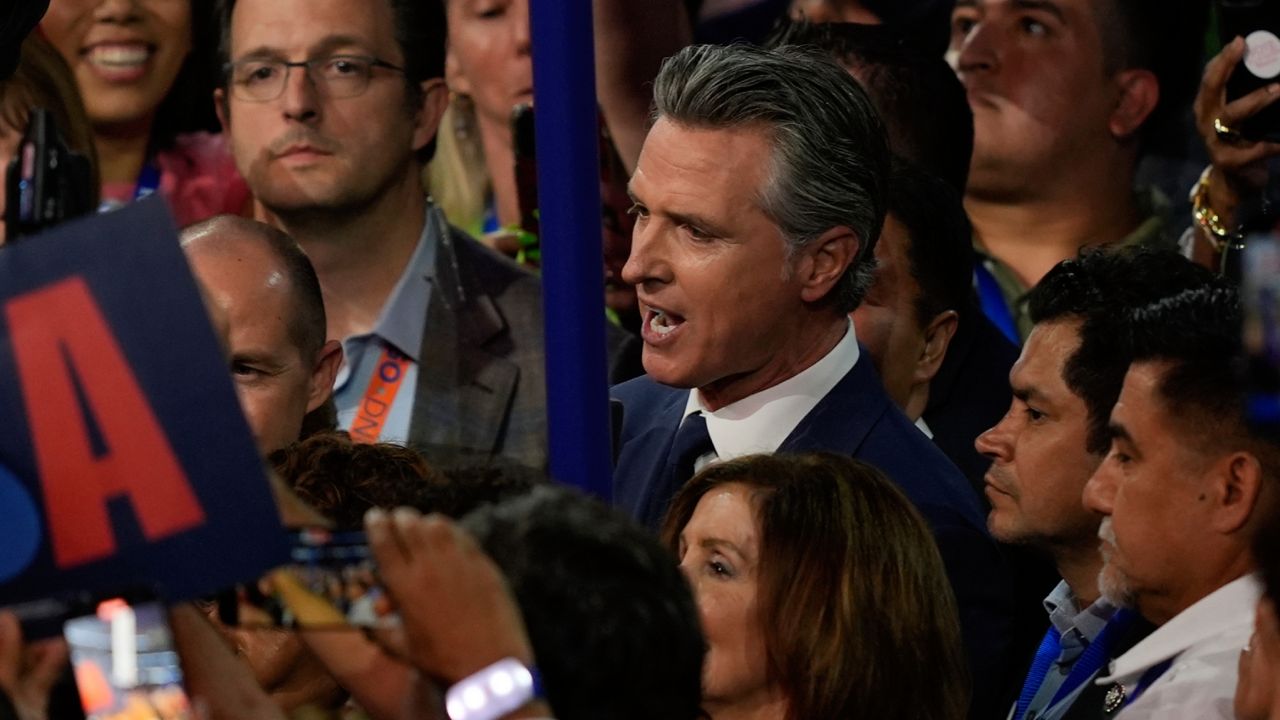The first of seven so-called "hydrogen hubs" launched in California on Friday.
/The state will receive up to $1.2 billion as part of the Biden-Harris administration’s Bipartisan Infrastructure Law to create regional centers that generate hydrogen as an energy source for electricity, vehicles and manufacturing.
Addressing climate issues “used to be bipartisan,” California Gov. Newsom said at the hub’s launch event in Oakland. Citing the creation of the federal Clean Air Act by Republican President Richard Nixon in 1970 and the creation of the California Air Resources Board in 1967 by Republican Gov. Ronald Reagan, Newsom said, “it was about common sense, clean air, clean water. It was about a mindset of sustainability.”
Last October, the Biden-Harris administration selected California and six other regional hubs for $7 billion in funding to kickstart the development and manufacturing of hydrogen fuel. The goal is to replace fossil fuels such as oil and coal with renewable hydrogen, which emits only air and water when used as a fuel.
Newsom said the $1.2 billion California is receiving will create 200,000 jobs and attract $12.6 billion to advance the federal effort to elevate hydrogen’s status as a clean fuel source. The hydrogen hub program as a whole is expected to draw $40 billion in private investments.
In addition to California, Washington, Minnesota, Texas, Pennsylvania, West Virginia and Illinois will also be turned into hydrogen hubs. Each hub is comprised of a network of organizations that will produce clean hydrogen as well as the different entities that will use it, such as heavy-duty trucking, personal transportation, refueling stations and pipelines to transport it.
California’s hub is comprised of 400 founding partners representing labor, nongovernment organizations, industries, all levels of government and local communities.
Still in its infancy, hydrogen is currently used to generate electricity and in a handful of passenger vehicles and heavy-duty trucks, but eventually it will be used to power agriculture, aviation, shipping and other difficult-to-decarbonize heavy industries.
“Where California goes, the rest of the country will follow and then of course the rest of the world,” Department of Energy Under Secretary David Crane said at the state’s hydrogen hub launch in Oakland, where he had arrived via the world’s first hydrogen ferry and was flanked by hydrogen-powered trucks.
Crane said the Department of Energy is pursuing five strategies to establish hydrogen as a fuel source, including research and development at national laboratories, creating the nation’s new hydrogen hubs, creating a new hydrogen supply chain, offering tax credits to help hydrogen be more affordable and establishing fueling.
At the event, Crane announced the Department of Energy will provide $62 million in funding to accelerate hydrogen research and development with 20 projects. One of those projects is based at the Oakland seaport.
“Hydrogen can be one of the pillars of the 21st century economy,” Crane said. Making the hydrogen economy, he said is a matter of having the vision, audacity and courage to take advantage of the moment.
“Everyone here,” he said, “is doing that.”



